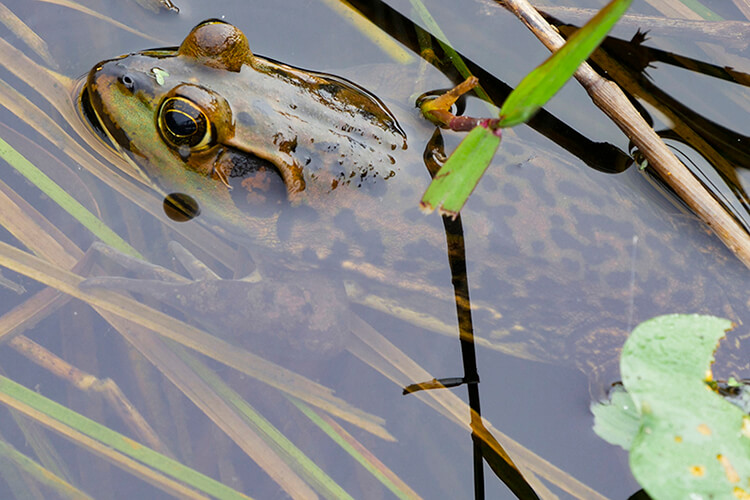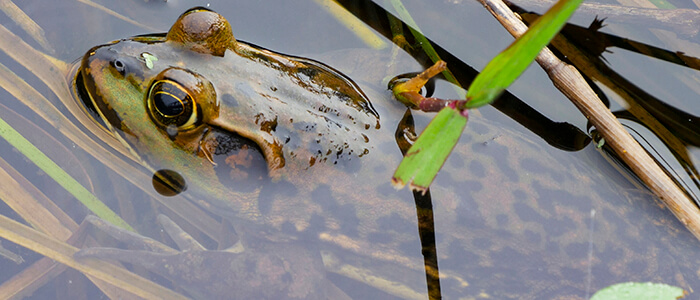Florida Frogs

Florida-Friendly Landscaping™ in a Minute
Episode Archive
Episode #110 | Original Air Date: July 31, 2020
Related Resources
Transcript
Summer nights in Florida can be noisy, thanks to Florida’s abundant frog population.
Twenty-seven species of frogs are native to Florida, including several species of toads which are just a particular type of frog.
Adult frogs range in size from one to six inches and typically feed on beetles, roaches, crickets, and other small invertebrates. However, the invasive Cuban tree frog that has colonized Florida is known to eat our native tree frogs.
Learn how to tell the difference between native and invasive frogs by talking to your county Extension office.
So, keep an eye, and an ear out, for frogs this summer. You can’t miss them.
Florida-Friendly Landscaping™ in a Minute is a production of the University of Florida’s Florida-Friendly Landscaping™ Program, IFAS Extension, and WUFT-FM in cooperation with the Florida Department of Environmental Protection.

